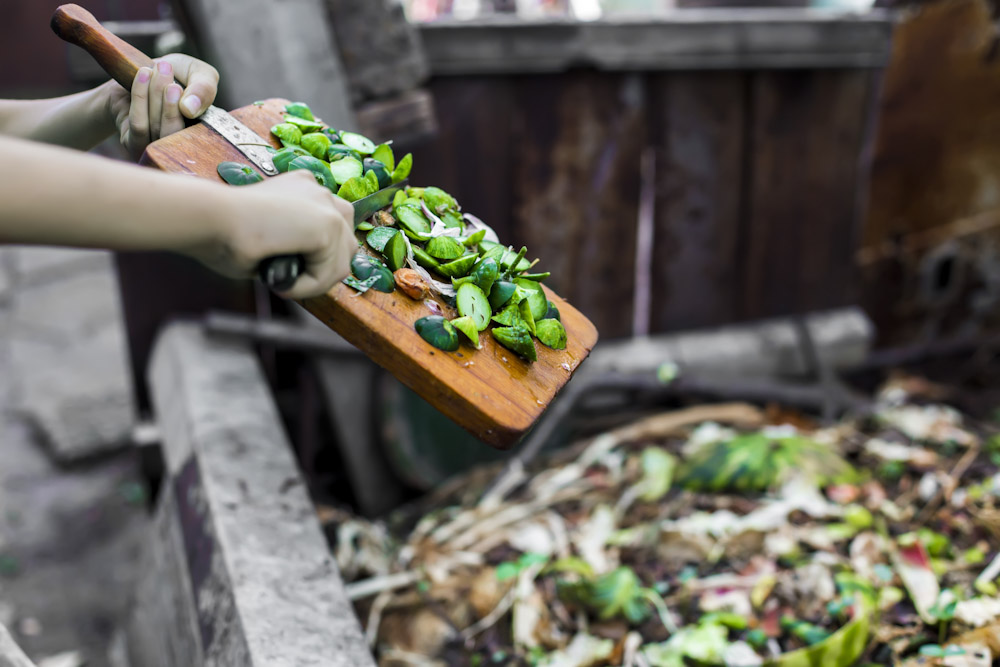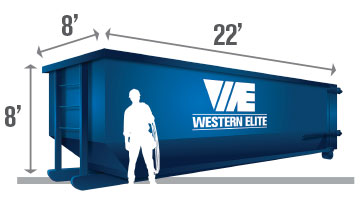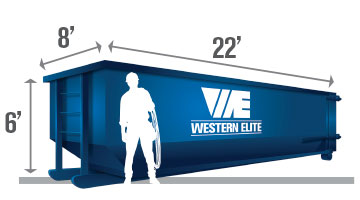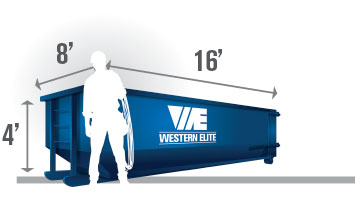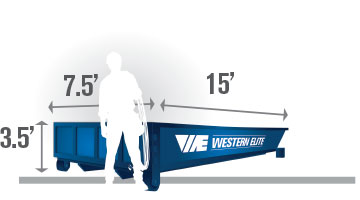We can take simple steps to help reduce food waste in our daily lives. With some thoughtful planning and awareness, we can make a difference.
In the United States, the United States Department of Agriculture (USDA) estimates that 31% of food produced is wasted. That equates to about 133 billion pounds of food that are discarded each year. Western Elite’s largest dumpster rental is 40 yards. With the amount of waste produced each year, you would fill a commercial dumpster rental of that size over one million times.
Some of this waste is due to food spoiling before it reaches its retail destination; some is due to uneaten food being thrown away. And not only is the food itself wasted but resources are used to dispose of it. This includes land, water, energy, and the labor needed to collect, process, and eventually dump the food waste.
Four Ways to Fight Food Waste
Did you know that in 2015 the USDA and the Environmental Protection Agency (EPA) introduced a goal to reduce US food waste by 50% by the year 2030? Achieving this goal will involve balancing supply with demand, improving transportation and storage of food, and recycling food scraps when possible.
In your own home, there are four easy ways you can help reduce the amount of food wasted.
Meal Planning – Planning weekly meals not only cuts back on food waste but it saves you money. If you know what you need to get on the table each night for yourself and your family, you can ensure you’re purchasing the right ingredients when you grocery shop, preventing items from spoiling because you forget to use them.
- Tips for Meal Planning
-
- Look at what’s currently in season and on sale. Plan your meals around these ingredients when possible.
- Use themes to inspire meals. Meatless Monday, Taco Tuesday, and “kids’ choice” can make mealtimes fun, and easier to plan.
- Plan specific meals using leftovers. To help ensure your pulled pork from Sunday dinner doesn’t go to waste, incorporate meals throughout the rest of the week that use it up. From sandwiches to salads, add in leftovers when you can.
Proper Food Storage – Don’t you hate it when you head to the fridge to grab a veggie for your stir fry and you find it’s gone soft? Or when you unwrap the steaks from the freezer and see they’re thoroughly freezer burned? Proper food storage can reduce food waste, and ensure you have all the ingredients on hand that you need for meal planning.
- Food Storage Tips
-
- Keep dairy in the back of the fridge for optimal temperatures to prevent spoiling.
- Store meat on the bottom of the fridge so as they thaw they don’t leak on other items below and contaminate them.
- Keep fresh herbs in water in your fridge, and then cover them with plastic wrap. Any greens in the fridge, such as lettuce, can be wrapped in a paper towel to reduce moisture.
- Fruits and vegetables don’t all have to be stored in the fridge. Stone fruits, citrus, bananas, and root vegetables can be left in a cool pantry or on the countertop.
- Rotate through your pantry staples to ensure you’re enjoying them before their expiration date. Use airtight containers rather than the original packaging, i.e. transfer pasta, grains, cereal, and other shelf-stable items into plastic or glass containers.
- Freeze your leftover or surplus food for future use in freezer-safe containers.
Grow Your Own Food – Even a small home garden can help reduce food waste, as it eliminates the potential for food to spoil before it gets to consumers. As you meal plan, you can determine what would be best to grow to complement your tastes.
Compost – Having leftover food is sometimes inevitable, but composting is a great way to ensure it doesn’t go to a landfill. Vegetables, fruits, dairy products, grains, and eggshells are examples of kitchen scraps that can be composted. Adding these to your yard waste can help you create nutrient-rich soil for future planting. Whatever you put into your compost is less waste contaminating other items in your dumpster rental, and is less waste dumped in landfills.
Food Recovery Hierarchy
The USDA has a food recovery hierarchy that takes a broader look at how we can, as a nation, reduce the amount of food we waste. From most preferred to least preferred, it is as follows:
- Source Reduction – Simply put, we can stop purchasing more food than we really need. Restaurants can audit their menus to include only the most popular meals with smaller servings, helping them limit their waste.
- Feed Hungry People – This initiative involves food drives to bring unspoiled, healthy food to neighbors, shelters, or food banks. This can be done on an individual level, or through community organizations.
- Feed Animals – Food scraps make great fuel for animals, which is why farmers have fed their pigs, chickens, and cows. Communities can donate leftover food to zoos, and pet owners can consider using food scraps to feed dogs, cats, birds, and even reptiles.
- Industrial Uses – Have you heard of biofuel? It’s made with food waste, keeping it out of landfills. Fats, oils, and grease can be anaerobically digested (without oxygen) by microorganisms to recycle food waste and return it to the soil.
- Composting – Businesses and individuals alike can compost inedible food items. Compost not only enriches the soil when it’s amended back into the Earth, but it can improve water quality.
- Incineration/Landfill
Of course, when you reserve your Hendeson dumpster rental, you are welcome to use it to dispose of food or wet waste. However, be sure to keep those items separate from potentially recyclable materials. Your dumpster rental does include recycling if needed, but reusable materials can only be sorted and recycled if they’re clean and dry.

